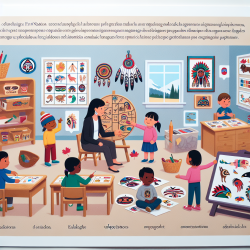Students who speak local varieties of English that differ from the standard English promoted in schools can face educational disadvantages. This is particularly relevant for many First Nations students in Canada, who may speak a local English variety that differs in vocabulary, phonological awareness, syntax, and language use from the standard English. These differences can negatively affect their literacy development and academic achievement.
Research on Indigenous English varieties in Canada is limited, leading to challenges in appropriate assessment and teaching. This blog post summarizes a study focused on identifying the grammatical features of English spoken by First Nations kindergarteners in a Northern British Columbia community. The study aimed to determine whether these children were speaking a unique local English variety and to identify its grammatical features.
Creating an Inventory of Grammatical Features
The study began by creating an initial inventory of grammatical features based on literature review, anecdotal reports, and informal observations. This inventory was then refined through consultations with scholars knowledgeable in Dene languages, examination of published narratives of local adults, and retroactive analysis of kindergarten language samples.
Key Findings
The study identified at least 23 grammatical features characteristic of the local English variety spoken by the kindergarteners. These features were categorized into verbs, pronouns, determiners and articles, prepositions, conjunctions, non-verb-related morphology, and utterance-level features.
Verbs
- Absent copula or auxiliary: e.g., "They ___ waiting" instead of "They are waiting."
- Uninflected past tense: e.g., "He look there yesterday" instead of "He looked there yesterday."
- Absent third person singular
: e.g., "He kick the ball" instead of "He kicks the ball." - Regularization: e.g., "Her blowed" instead of "She blew."
Pronouns
- Undifferentiated pronoun case: e.g., "Her blew that" instead of "She blew that."
- Neutralization of gender distinction: e.g., "He is trying to catch it" when referring to a female.
Determiners and Articles
- Use of "that" for "the": e.g., "Him got in that lake" instead of "He got in the lake."
- Different article use: e.g., "a glasses" instead of "glasses."
Prepositions
- Different prepositions: e.g., "The girl got along the way" instead of "The girl got out of the way."
Conjunctions
- Use of "and here" or "then here" for "and then": e.g., "And here the bus came" instead of "Then the bus came."
Non-Verb-Related Morphology
- Different possessive: e.g., "The bull horns are stuck" instead of "The bull's horns are stuck."
- Different plural: e.g., "The bee are gonna come out" instead of "The bees are gonna come out."
- Different negation: e.g., "I not know" instead of "I don't know."
Utterance-Level Features
- Absent phrase: e.g., "___ waiting for her to come" instead of "She is waiting for her to come."
- Topicalization: e.g., "That bull, he was mad" instead of "That bull was mad."
- Repetition for emphasis: e.g., "He got really, really mad."
Implications for Educational Practice
Understanding these grammatical features is crucial for educators and speech-language pathologists to avoid mislabeling these children as having language disorders. Instead, these features should be recognized as part of a unique English variety. Educators should use respectful, evidence-based teaching practices, such as recasting and contrastive analysis, to help students navigate between their community variety and standard English.
Conclusion
This study highlights the importance of recognizing and valuing the unique grammatical features of First Nations English varieties. More research is needed to fully understand these varieties and to develop appropriate assessment and teaching methods. By doing so, we can celebrate linguistic diversity and support the academic success of First Nations students.










